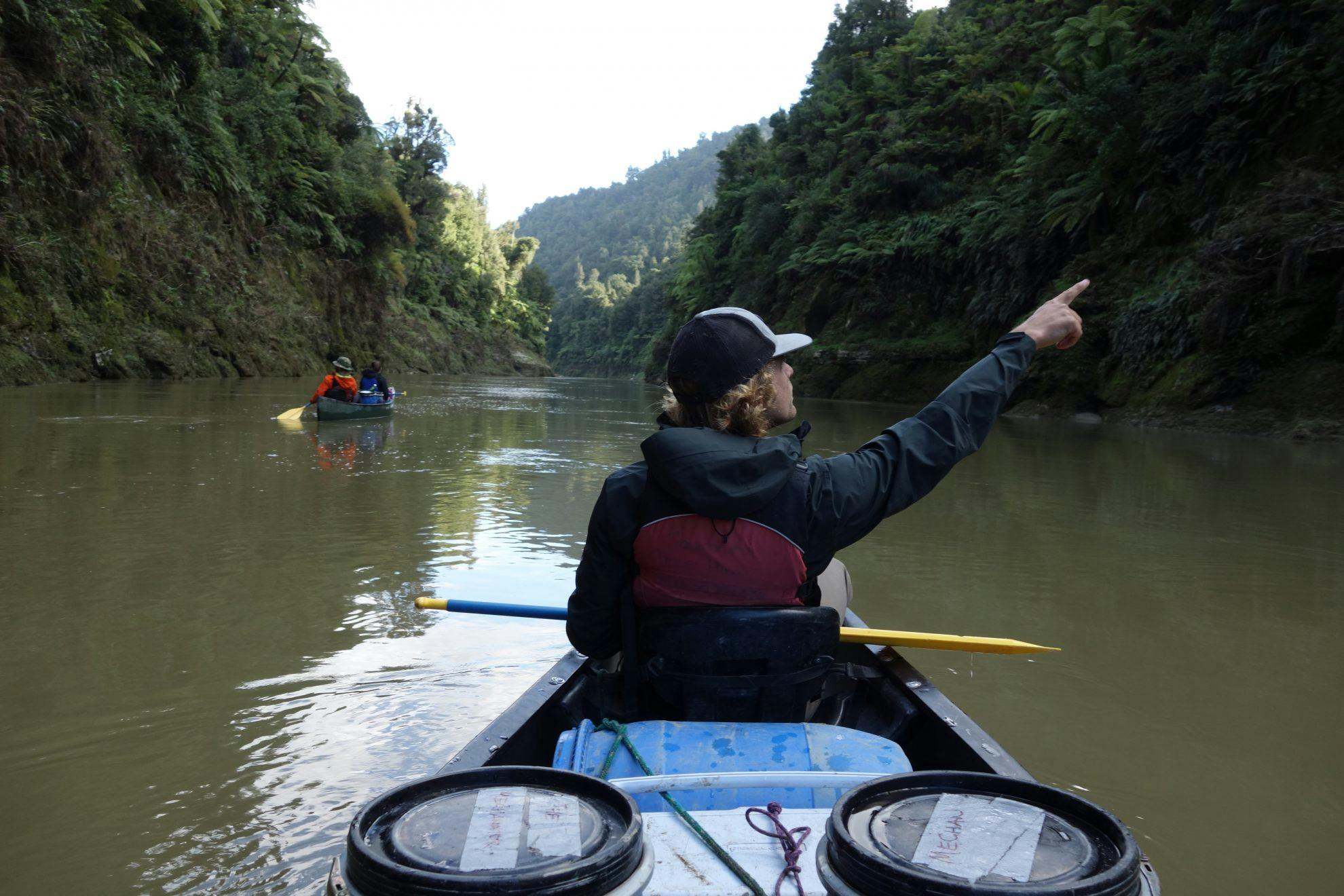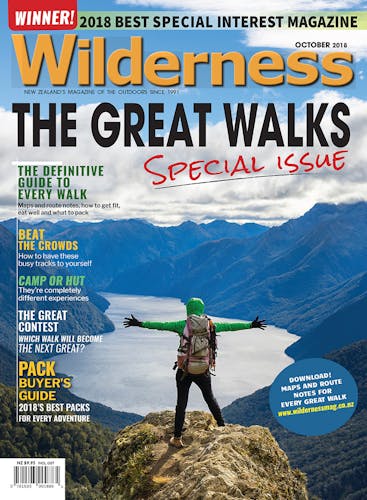While most people take four or five days to complete the Whanganui River Journey, it’s possible to do it in a weekend.
When a friend said he wanted to do the Whanganui River Journey, but couldn’t get more than a weekend off work, my husband and I jumped at the chance to cram a week’s worth of adventure into three days.
We quickly planned the three-day, two-night journey which meant ditching work on Monday. If taking a day off on either end doesn’t work for everyone, it’s certainly possible to do a one-night, two-day trip – most operators offer two- to five-day journeys. Our operator, Ron Hawkless from Taumarunui Canoe Hire, drops the two-day canoeists in right at their base camp, on a farm near Taumarunui.
Upon arriving, we popped up to the office to say hello, sign a waiver, and collect our waterproof gear barrels. We took five barrels, which was enough for our clothes, cooking kit, sleeping bags and tent. While we’d planned to sleep in huts both nights, Hawkless requires each party to bring a tent for emergencies.
With our barrels packed, we slept in our car so we could have an early start the next morning.
At 5:45am we groggily packed the last of the barrels by headlamp and made our way to the meeting area for a safety briefing. Hawkless explained paddling techniques and showed us how to navigate rapids. For our two-night journey, we’d be setting off from Whakahoro, canoeing 37.5km and spending the first night at John Coull Hut. The second day would take us to Tieke Kainga hut, another 29km downriver, finally finishing at Pipiriki landing on day three, 21.5km further.
There had been heavy rains the previous week and the river was flowing more quickly than usual. Hawkless said it would make travel times a bit faster; likely shaving about an hour off each leg of the journey.
With our canoes loaded onto the trailer, we drove the long road to Whakahoro.
The first few hours on the river after Whakahoro contain several rapids, which can be a steep learning curve for those with minimal canoe skills. We narrowly avoided capsizing more than a couple times before getting our groove, learning how to aim the canoe for the large ‘V’ formed by the widest section of the rapids.
There are clearly-defined roles for canoe partners. The person in the bow is the powerhouse; their only job is to paddle, following the instructions of the person in the stern, who also controls the direction of the boat by using their oar as a rudder.
I quickly learned that I rarely needed to paddle. I found myself constantly steering the canoe by placing my paddle diagonally behind us at an angle, strongly shifting it back and forth to counteract my husband who was paddling powerfully in the bow.
We arrived at John Coull Hut with a couple of hours of daylight to spare. We tied up the canoes and began the arduous task of carrying our barrels to the 24-bunk hut.
Nearly everyone in the hut was also heading to Tieke Kainga the next day, so we were all on the river by 9am. Halfway to Tieke is the track to the Bridge to Nowhere – a short walk offering an opportunity to stretch cramped canoe-legs.
We reached Tieke Kainga just before 4pm.
Tieke Kainga is also a marae, with a small meeting house. When iwi are present, there is often a powhiri to welcome visitors. However, because it was late in the season, there were no iwi or even hut wardens present.
The final day required a rigid departure time in order to meet our shuttle at the pick-up point. We were on the water by 9am, and after navigating several big rapids, made it to Pipiriki by noon.








